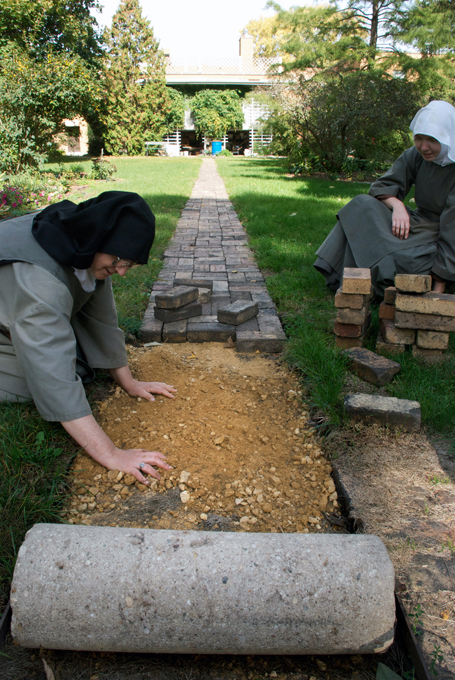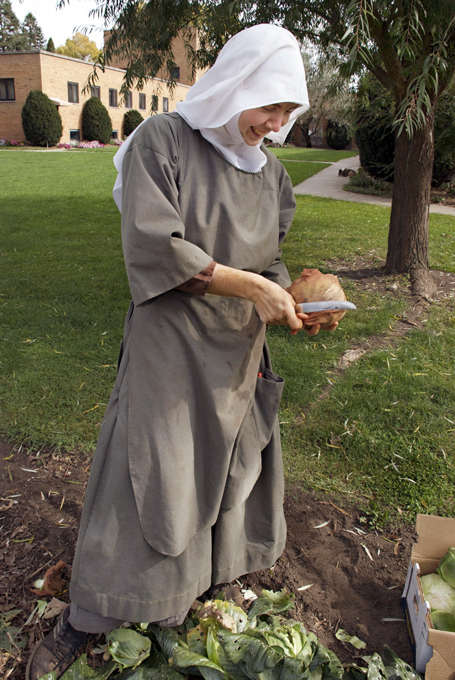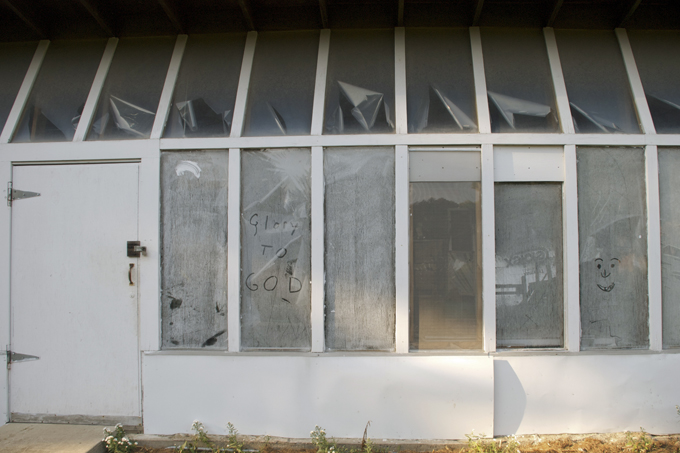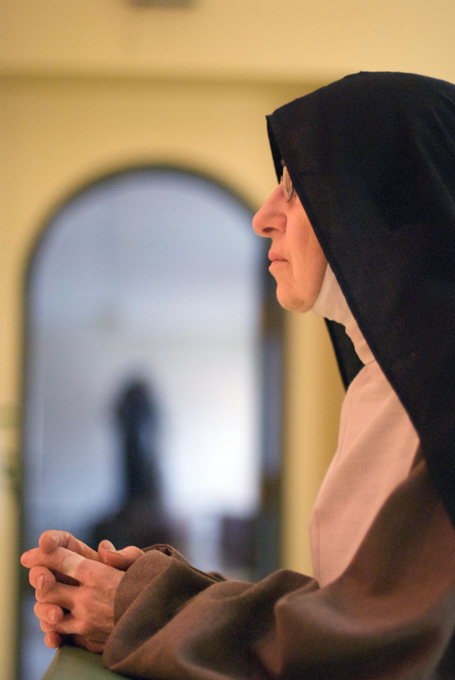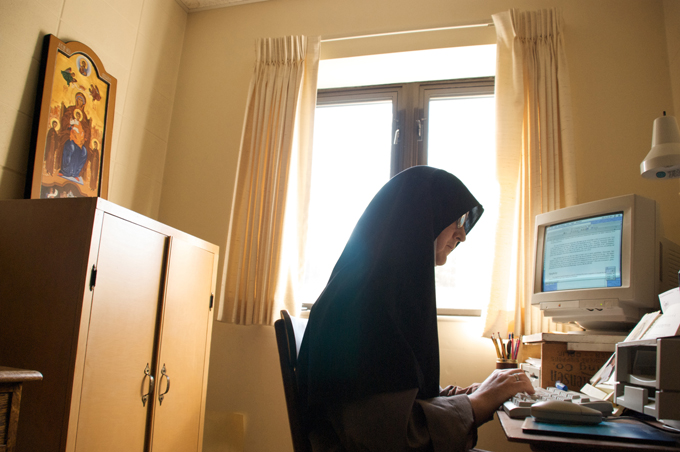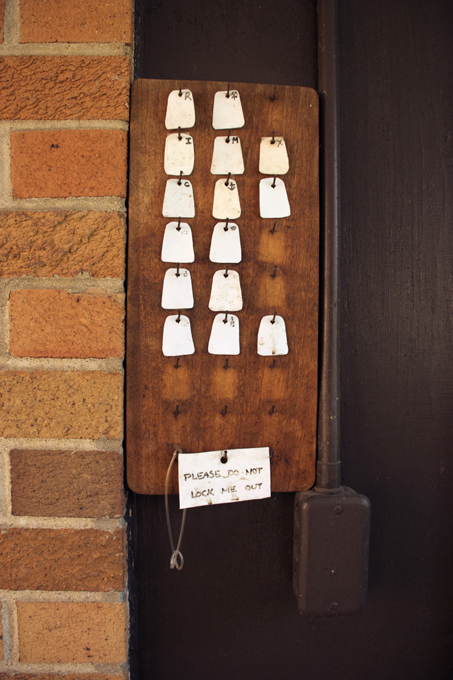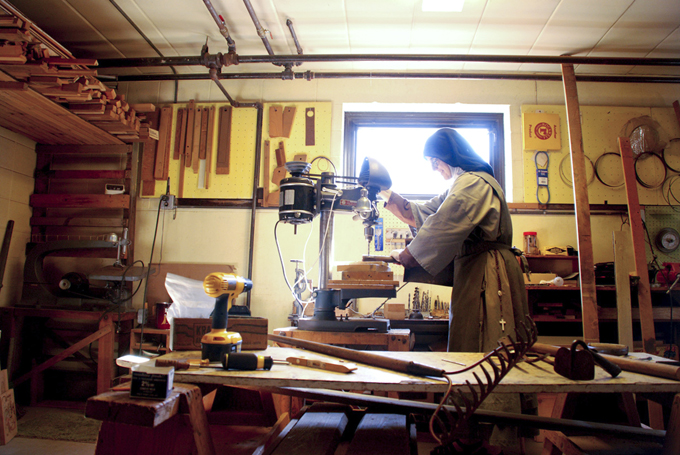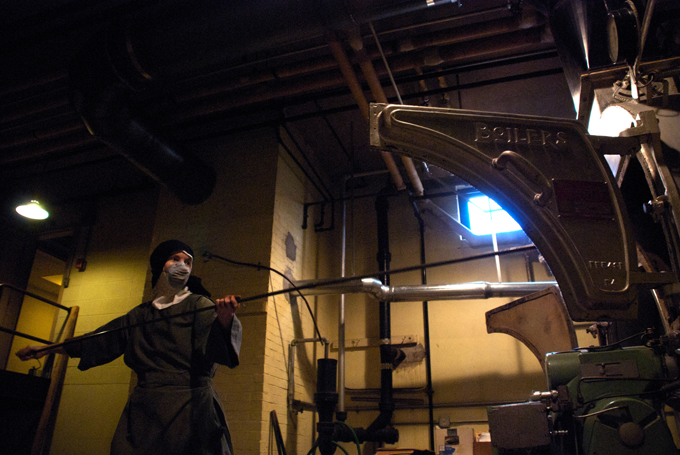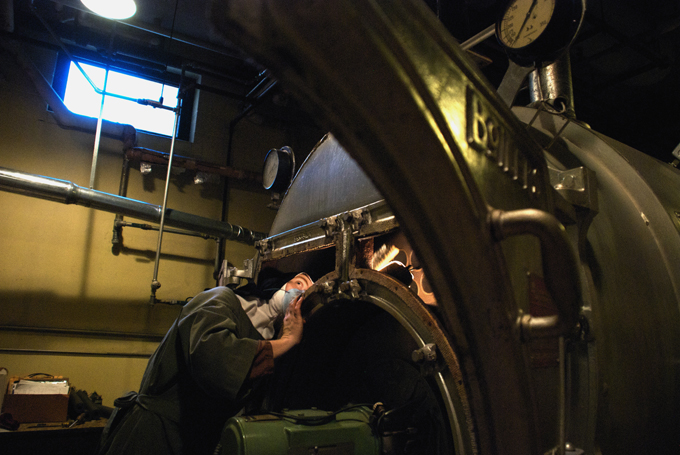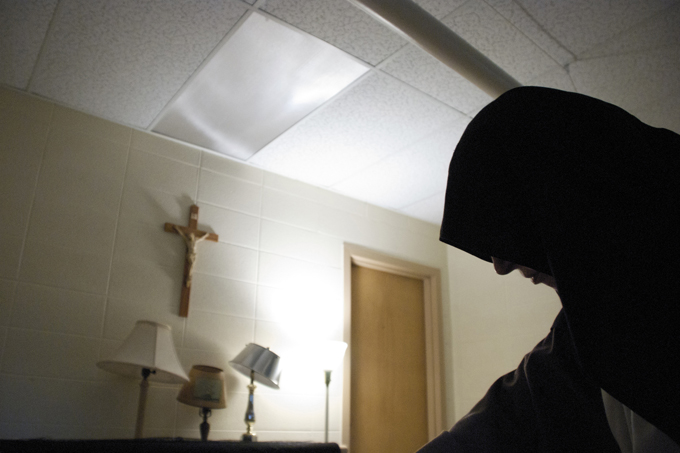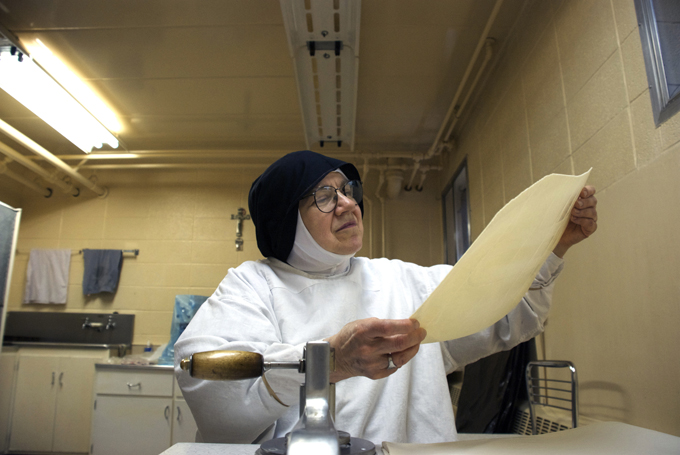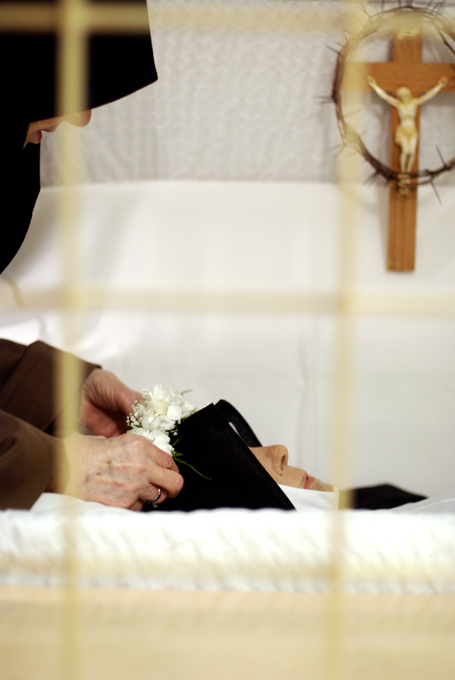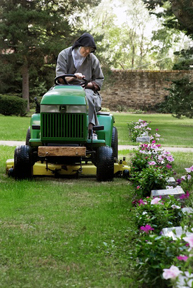
Erased from the Landscape
Scroll the gallery above
Scroll the gallery below
traveling exhibit
40 digital C-print photographs are framed in black wood with acid-free mats and conservation reflection control glass
Eighteen prints are 12x18-inch in 18x24-inch frames
twenty-two prints are 16x24-inch in 24x30-inch frames
background
The Poor Clare Colettine nuns in the Corpus Christi Monastery rarely leave their fourteen-acre gated campus and 25,000 square foot enclosed monastery; doctors make house calls and the nuns vote by absentee ballot. When a nun dies, she is buried in the enclosed premises with a tombstone listing her religious name (not her birth name) and her death date (not her birthdate) to signify the start of eternal life.
The term “erased from the landscape” was used by the Mother Abbess to describe the decline, since Vatican II, of religious sisters in America donning a habit, as well as the cloistered contemplative nuns' value of their hiddenness and anonymity.
The dynamics of this project shifted over time, with the Mother Abbess phoning to extend invitations to photograph different aspects of monastic life –– outdoor work during the different seasons; Clothing Ceremonies (when a postulant becomes a novice and receives her religious name and dons a habit for the first time); Jubliee celebrations marking a nun's 50 years in religious life. Sister Ann Frances had served in WWII as a member of the Women's Army Corps (WAC) before she joined an active religious order to be a school teacher, and then transferred to the Corpus Christi Monastery to become a cloistered contemplative nun. When Sister Ann Frances died, the Mother Abbess offered the rooftop as a vantage to make photographs of the funeral service with military honors.
This program is partially supported by a grant from the Illinois Arts Council, a state agency; SHURE, Inc.; and the Puffin Foundation.



